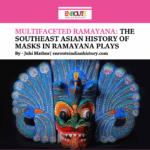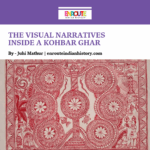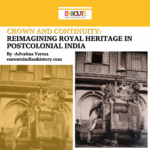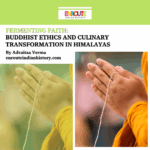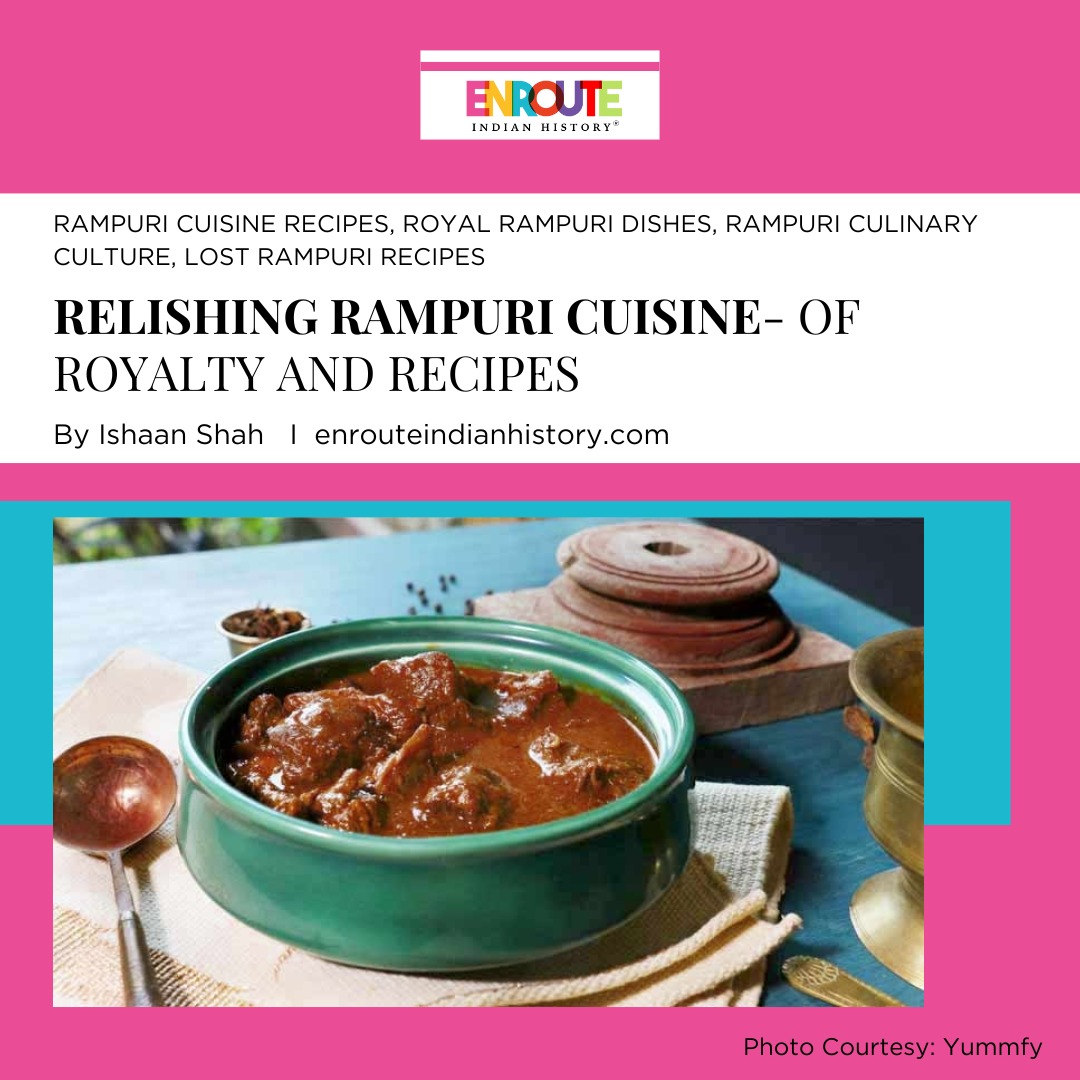
Taking a plunge into Indian culinary culture, the royalty cannot be overlooked. Among the various royal cuisines in India- Mughlai, Awadhi, Rajput, etc, it is also deemed necessary to include Rampuri royal recipes and authentic Rampuri dishes. These dishes have formed the crux of Rampuri’s food heritage and while some of them are lost, some dishes continue to dominate the culinary landscape of Rampur.
Rampur, in Uttar Pradesh, is not only famous for its Rampuri knife and refining and milling industries. But it was a seat of the Nawabs and it was their royal cuisine that became popular among foodies and non-foodies alike. These dishes and their authentic traditional recipes are preserved in various manuscripts, written by the cooks or khansamas, at the Rampur Raza Library. From yakhni pulao and taar gosht to various types of halwa- and some even unusual ones like the adrak ka halwa constitute the Rampuri food heritage, preserved by the khansamas. These Rampuri foods have their distinct character. Still, it was majorly influenced by Mughlai, Awadhi, Central Asian, and Rajput food cultures and one can entice their taste buds with Rampuri royal cuisine. It’s not all about royalty as well; it contains plebian elements as well, for example, urad dal khichdi, a commoner’s delight, found its place amongst the royalty too. Distinct from Awadhi cuisine, traditional Rampuri cuisine balances the use of spices such as nutmeg and saffron, added with the use of fried onions. Additionally, Rampuri culinary culture furthers its distinctive culinary identity with the use of regionally grown yellow chilies, with Chungezi masala too (a mix of 21-odd spices and herbs). It becomes riveting as and when one delves into the rich culinary culture of Rampur, imbued with its distinctive meat dishes and unusual desserts, forming an integral element of Rampuri’s food heritage.
RAMPUR & ROYAL CUISINE
Rampur, in Uttar Pradesh presently, was a 15 gun-salute princely state during colonial rule. It came into formation when the Rohilla State of Rampur was laid by Nawab Faizullah Khan in October 1774, in the very presence of colonial rulers, the British Commander of the time, Commander Colonel Champion, and thereby became a governable territory under colonial protection. Being a Muslim-ruled princely state, this state survived the pillaging of the 1857 rebellion. Attributing to its prominent location between Delhi and Awadh, the state was open to absorbing chefs, poets, and musicians who fled post-1857. Rampur thus became a melting pot of various subcultures under its ambit. There are a variety of cookbooks preserved as manuscripts for reference at the Rampur State Library. The Alwan-e Nemat by Tika Ram Lucknowi, for instance, mentions a variety of recipes right from preserves and pickles to pulaos, and sweets. Nawab Ahmad Ali Khan commissioned other cookbooks like Dastur Pukhtan and Kitab Lazzat as culinary manuals.
Such an upsurge could be seen as the beginning of royal Rampuri cuisine.
Furthermore, culinary awareness soon trickled into the royalty furthered by the influx of khansamah, or chefs from 1857-affected areas of Awadh and Delhi. Many of these Rampuri culinary manuscripts show influences from Indo-Persian cookbooks like Nuskha-e-Shahjahani which mentions pulao, qaliya, kebabs, and qormas along with Awadhi influences that mention musallam, nahari, sheermal, and others. One of the most interesting cookbooks from the aftermath of the revolt is Nuskha Hai Ta’am which is authored by a Nawab- Nawab Kalbe Ali Khan- giving immense power and importance to the culinary traditions of Rampur. Kallu Khan is known to be the khansama of this cookbook and it starts with a halwa sohan papdi recipe and is also known for halwa sohan jaozi. It mentions more lesser-known sweets and recipes for specific achars and chutneys.
With such recipes holding the privilege of being mentioned in the cookbooks, this manuscript can indicate cultural and culinary preservation, occupying a void created by the aftermath of the 1857 rebellion. Taking into account the last cookbook on Rampuri cuisine, Shahi Dastarkhwan by Latafat Ali Khan, published in 1948 is the only one written by a royal chef of the royal kitchen. It took almost 13 years for this book to get published, which is distinct because a chef wrote the recipes. It was also made accessible from the royalty to the middle classes.
Interestingly, this book also includes approximate expenses to make the dishes and the time taken. Rampur was the first princely state to join India in 1949. The khansamas became repositories of extraordinary culinary skill and excellence through the years preceding Rampur’s accession to India. Even though the cooks were reduced in the royal kitchen of the then Nawab Raza Ali Khan, the royal Rampuri dishes at the Rampuri dastarkhwan counted to around 100. Gracing the royal tables of Rampur were shabdegh, dumpukht, pulao, urus e behri, and many more, as mentioned by the sister-in-law of Nawab Raza, Jahanara Habibullah. Quite unsurprising for a Nawab, Nawab Sayed Hamid Ali Khan recruited 150 khansamahs in three main kitchens- the Indian, the English, and the sweetmeat kitchen and each khansamah was a specialist in only one dish. Known for their hospitality, the guests were served special fare that consisted of sheermaal, kebabs, qorma, qaliya, and a rice dish. Certainly, these delectable dishes and the long experience of With their secret recipes, khansamahs working in the royal kitchen shape the contours of Rampuri culinary culture.

(Source- Wikimedia Commons, Rampur Raza Library)
RICE AND KEBABS- TRADITIONALITY AND ROYAL RAMPURI CUISINE
Plunging into royal Rampuri cuisine, the rice items are worth noting as their varieties. Traditional Rampuri cuisine now has a yakhni pulao made with Basmati rice and the meat stock or yakhni as a base. But Basmati did not crop until the 90s when a local and highly aromatic rice variety, Hans Raj was used. When talking about the varieties of pulaos served during Nawab Sayed Raza Ali Khan’s reign on the royal tables till the 1960s, in her memoir, Jahanara Habibullah (her sister was married to the Nawab) mentions that there were over 10 varieties of it. The cookbook manuscripts mention over 50 different types of pulao right from Pulao Shahjahani, mutanjan pulao, or a sweet pulao, to ananas pulao and pulao sheer shakkar (milk and sugar). Apart from these mentions, a dumpukht pulao prepared with whole partridge, chicken, quail, or a leg of mutton is a specialty of Rampur. Rampuri regards biryani as a soulless combination of qorma with semi-boiled rice. However, there is a closer version of this in the form of Qorma Pulao, which is an old recipe.
The Nawabs enamored the samosa pulao, a yakhni pulao garnished with samosas filled with qeemas, but this dish is only an archival recipe now. According to the manuscript cookbooks, the qeema samosas were first steamed and then fried. The pastry of the samosa was made by kneading refined flour, egg whites, and chickpea flour. The filling was made with half-cooked mincemeat and ground to be filled into triangles made from the pastry batter. These samosas were packed in betel leaves and were steamed over a degh for hardening the crust. Then, the betel leaves were cut and the crispy samosas were shallow-fried.
When pondering rice dishes, one cannot forget khichdi from the menu since it is an important meal for the common people. Well, the Nawabs of Rampur relished khichdi too! In traditional Rampuri cuisine, a khichdi means a meal that includes qeema, chicken, and gobhi gosht along with other accompaniments such as chutney, ghee, til oil, etc. Earlier, this wholesome meal was cooked with another local variety of highly aromatic rice, tilak Chandan. Now it is simply cooked with high-yielding rice variety with urad dal, boiled with dried yellow chillies and salt along with flakes of ginger. But there were some elaborate varieties of this dish, as found in the cookbook manuscripts. A combination of a moong dal khichdi with a yakhni pulao formed a ‘khichdi pulao’. Other khichdi recipes include moong pulses, meat, rice cooked with spices, and ghee in the preparation of dhuli khichdi and muqasshar khichdi. Even though the cookbook manuscripts at the Raza Library do not mention urad dal khichdi in their accounts, considering the oral history, it can inferred that urad dal khichdi was a favorite of the royalty, who enjoyed constituents of plebian cuisine as well. An interesting account talks of Nawad Sayed Hamid Ali Khan who whipped a cook for discovering a bone piece in the biryani and was appreciative of the same cook who prepared the royalty-favorite urad dal khichdi, who requested his son’s education to be sponsored by the royal state as a reward.

(Source- Scroll, Urad Dal Ki Khichdi)
Speaking on kebabs, in her memoir, Jahanara Begum describes a lesser-known variety- kabab urus e behri, which is made up of a freshwater fish, sanwal that is cooked and reconstructed to look like a two feet long fish with scales, tail, and tongue, each that tastes differently. It had a fake tongue with its distinct flavor. This presentation was learned from the Awadhi khansamah and is now forgotten in Rampur, one of the lost Rampuri dishes.
A popular authentic Rampuri dish, bhapi kababs are slow-cooked with aromatic ghee with fried spices and onions forming its base. The recipe also includes softening the mincemeat using raw papaya milk with ginger. Gormands and khansamahs disregard the use of machines for mince preparation and prefer working with a silbatta. The meat prepared is then smoked with burning charcoal, and placed on onion skin, Then, melted ghee is poured on the charcoal and the vessel is tightly covered for the flavors to settle down. Then, the mince is shaped into round shapes and put into another vessel, containing warmed ghee, covered and slowly cooked, and turned intermittently till they are finally done. Another version of kebabs, enjoyed in Rampur is the chapli kebabs which are irregularly palm-sized with basic spices, chickpeas flour, fried onions, and intense use of garlic. Before deep frying these kebabs, finely chopped onions, coriander leaves and green chilies are kneaded into the minced meat. These are tougher than the Lucknowi galauti kebabs and are enjoyed with yellow chili chutney.
Shami kebabs form an integral part of traditional Rampuri cuisine. It is prepared with minced meat and mixed with chana dal, herbs, and spices. The lentils and meat are prepared until tender along with an aromatic mixture of spices such as cardamon, black peppercorns, cloves, cinnamon, and bay leaves. One of the manuscript cookbooks in the Rampur Raza Library mentions that rather than boiling, the mince should be sauteed with fried onions. This mixture is then cooled and grounded to make a smooth paste, which is then molded into small round shapes with besan flour. Then they are shallow fried, forming a golden-brown thin crust on the outside.
But, that’s not all about the Rampuri cuisine. Meat cannot be left on their menus. It is their diversity of meat dishes that characterize the Rampuri food heritage, in addition to their mouth-watering list of desserts.
MOUTH-WATERING MEAT DISHES-RAMPURI ROYAL CUISINE
Considering the memoir of Jahanara Habibullah, she describes various dishes made in the royal kitchens. Out of these, two principal dishes were the qorma, which contains coriander, and the other is qaliya which is made of turmeric. She mentions a special white qaliya made of green chilies, yoghurt, and milk as its principal ingredients. The technique for making these two curries is mentioned differently in the culinary archives of Rampur. For qorma, the meat is mixed with salt, curd, and ginger, and golden-fried onions are added to the meat curry. One of the qaliya is the ‘taar roti’ where ghee-laden gravy, when poured from the spoon, resembled a glimmering golden thread or taar. Earlier, this curry used to be thinner but now the Rampuris favor a thicker one with spicy color and vermilion red ghee.
Recipes of qaliya with beets, carrots, and turnips are described in detail in the Rampuri cookbook archives. Finding its origins at the time of Muhammad Bin Tighalaq, when he decided to shift his capital from Delhi to Daultatabad in 1327, the Rampuri recipe talks about the tempering of the meat with ghee and onions, then vegetables are incorporated along with meat which is then boiled to obtain the base of the curry which is further thickened with rice powder. There is an unusual variety of qaliya-‘chashnidaar qaliya’ which is savory and sweet due to the sweet syrup added at the end. Even though the recipe is mentioned in the cookbooks collected at Rampur, there is a dearth of evidence when it comes to the actual cooking of a sweet qaliya.

(Source- Yummefy, Taar Gosht)
Another kind of qaliya is a shabdegh (shab is night and degh is cooking utensil). It was cooked through the night whenever prepared. Jahanara Habibullah describes the dish as containing mutton chops and koftas (meatballs), filled with jaggery and turnips studded. The cookbook, Shahi Dastarkhwan, written by Latafat Ali Khan, proudly says that the best
habdegh in the region was the Rampuri shabdegh, the most delicious one he had tasted in Hindustan. However, this dish has slipped into oblivion and has formed a core culinary memory of the khansamahs.
Interestingly, the royal kitchen of the Nawabs had a khansama who only cooked qorma. A cookbook from the state describes qorma murgh, where the process involves the marinating of the meat in yogurt and spices, then the onions are fried to their golden brown hue, and the marinated meat is added with saffron water, Rampuri qorma is known for its rich meaty flavor with few masalas.
Another delectable meat dish is the Gobhi-Gosht, one of the classic authentic Rampuri dishes. It is prepared with tender meat and cauliflower. The mutton pieces need to be pressure cooked with onion, garlic, tomato, ginger, and chilies and the spice mixture of red chili powder, coriander powder, and cumin powder needs to be mixed with it. After cooking the mutton, cauliflower pieces are added. Finally, it is garnished with coriander leaves and served with roti, naan, or rice.
A subaltern favorite dish of the Nawabs, the Aloo Gosht would grace the royal table, where the potatoes sat with meat chunks in a pan on a chulha for a long time. It only carried some basic masalas and no other aromatic spices unlike in the Awadhi and Mughalai version.
An old recipe of the Rampuri khansamas, Rampuri Murgh Musallam must be noted too. This dish consists of whole chicken, filled with dry fruits and eggs and slowly cooked over charcoal. The chicken is then marinated. Then the yogurt, ginger-garlic paste, turmeric powder, garam masala powder, salt, and red chili powder are mixed to prepare the marinade. This is then rubbed all over the chicken and refrigerated overnight. The gravy comprises onion, tomato, ginger-garlic paste, cumin powder, coriander paste, Kashmiri red chili powder, cream and turmeric powder. After the chicken is prepared, it is added to the gravy and cooked well.
Yet another meat dish that Rampur offers is Sambhal Ke Seekh, a flavorful dish that uses spiced minced meat. It is used more often as a starter or appetizer on special occasions. The minced meat combines green chilies, onions, ginger-garlic paste, garam masala powder, cumin powder, red chili powder, lemon juice, gram flour, oil, salt, coriander leaves, and mint leaves. It is then allowed to marinate in the refrigerator for at least 2 hours. The meat is then molded into skewers and cooked over charcoal/tandoor for around 10-15 minutes. The dish is best enjoyed with naan or roti and could be served also with lemon wedges or onion rings with mint chutney. Any meal is incomplete without its desserts and Rampur has a lot to offer to sweeten one’s mood.
DELECTABLE DESSERTS- RAMPURI ROYAL CUISINE
Desserts have been a part and parcel of every meal and when it comes to Rampur royalty, they are no different.
Starting with gulatthi which is not to be confused with kheer or fereni. In this recipe, the rice is boiled until tender and mashed nicely before the addition of milk. Occasionally, cashew powder and almond powder are also used to give a nice nutty flavor, with adding khoya and cream. When the gulatthi has got the right consistency, sugar is sprinkled. Some older texts, however, suggest the preparation of qiwam or sugar syrup from honey and unrefined sugar. Then, a good amount of ghee and cardamom is tempered in a separate pan and the prepared custard is added to it, simmered in low flame, and stirred constantly till it acquires a pinkish-golden blush and begins to get firm at the bottom. It is then finally poured into earthenware bowls and garnished with fried cashews, pistachios, almonds, and raisins. Even though this recipe finds no mention in the cookbooks in the Raza Library, an interesting recipe of a variant, sheerin pulao gulatthi is found in Mohammad Hasan Khan’s book Haft Khwan Shaukat, published in Rampur. It is similar to the recipe of Rampuri gulathhi but since it is a pulao dish, it indicates the usage of spices and ghee.
Another sweet as a part of Rampuri cuisine is the andarsa sweet which is mentioned in the cookbook attributed to Nawab Sayed Kalbe Ali Khan of Rampur. In it, it mentions that rice needs to be soaked overnight and ground to make a fine paste. The paste was then kneaded with sugar syrup and ghee to prepare the pastry. Over time, there has been a substitution in the ingredients of this sweet dish, and the rice is not soaked overnight as rice flour is easily available. Now, powdered sugar is added to the rice flour with ghee and soda powder. Therefore, the original essence of the dish is now forgotten and this could be called one of the ‘lost’ Rampuri cuisine.
Begum Jahanara mentions another sweet by the name- dar e bahisht (gateway to paradise) which was a flaky sweet made of pistachios and almonds, sugar, and ghee and cut into squares. It is difficult to cook as this pastry of sugar, milk, and almond flour has to be prepared when the surface becomes a jaali and this flakiness is hard to achieve. It is now a lost recipe, even though some variations are described in the cookbooks like chickpea flour, pistachios, rose petals, and coconut dar e bahisht. Another lost recipe is the shaakh e tallahi which was like a roti prepared with sugar and saffron and was yellow. There are other sweetmeats referred to in oral history accounts, memoirs, and cookbooks. These include nan e santara which was a flat cake-like roti flavored with orange juice and its peel, an oval-shaped pastry filled with nuts or qurmay and a small samosa stuffed with nuts and dipped in sugar syrup or quamaq.
The Royal Rampuri cuisine is known for its halwa. One such halwa is the adrak ka halwa which carries an interesting story with it according to oral history and writings on Rampur cuisine. It is said that one of the Nawabs who was suffering from joint aches was advised ginger or a medicine based on ginger. But the Nawab detested ginger and therefore the royal cooks were asked to devise a ginger-based halwa so the Nawab would never suspect. Hence, it was in this way that this unusual kind of halwa was created. Another unusual one is aloe vera halwa which simply replaces ginger with aloe vera. But for the adrak ka halwa, the old cookbooks do not use samnak flour or sprouted wheat flour. Here, ground ginger cooked in milk is the base of the halwa. Some recipes advise blanching the ginger before grinding to reduce the sharpness of the taste. Old texts advocate the use of young ginger which is devoid of any fibres as old ginger can contribute to a coarse texture. Other kinds of halwa include egg, potato, fish, onion, and chili that originates from Rampur. Moreover, there are lost recipes too of sweetmeats and dishes where for example, only a few know how to prepare loz-e-Jahangiri which is a diamond-shaped crispy dessert made of almonds, khoya, ghee, sugar and layered with pistachios. Other such lost recipes include hubaabi which is made of refined flour, milk, sugar, and ghee, mangochi or sweet moong dumplings, akbariyan, gosh e feel, and sheer badey.

(Source- Slurrp, Adrak Ka Halwa)
The royal Rampuri cuisine with its authentic taste and traditional recipes promises a delectable journey for anyone to try out different cuisines. All the dishes right from its varieties of pulaos to its halwa, showcase the years of skills and expertise of a khansamah with adequate patronage from the Nawab, thereby shaping the food heritage of Rampur. Even though the culinary culture of Rampur has been influenced by other cuisines, it has evolved to carve its niche in the culinary landscape of India. All the manuscript cookbooks preserved in the Rampur Raza Library further illustrate brilliant efforts to safeguard its culinary heritage, which is replete with mouth-watering dishes and delicious sweets of a bygone era of royalty and culinary richness.
REFERENCES AND BIBLIOGRAPHY
Tarana Husain Khan (2023): Narrating Rampur’s Cuisine: Cookbooks, Forgotten Foods, and Culinary Memories, Global Food History
Muneeza Shamsie (2022): In my mother’s Rampur memoir, recollections of grand feasts and delectable desserts, Scroll
Kartikeya Shankar (2023): Nawab Kazim Ali Khan On Onion Halwa And Other Rampuri Dishes, Outlook Traveller
https://www.outlooktraveller.com/experiences/food-and-drink/rare-and-royal
Tarana Husain Khan (2022): Degh to Dastarkhwan: Qissas and Recipes from Rampur, Penguin Random House India
TN Lifestyle Desh (2024): The Saga of Rampuri Cusine: Know Its History and 9 Famous Dishes, Times Now News
IMAGE REFERENCES
https://commons.wikimedia.org/wiki/File:Front_view_of_Rampur_Raza_Library.jpg
https://www.slurrp.com/article/ramadan-special-rampuri-style-bhapi-kababs-for-iftar-1711624604910
https://www.yummefy.com/taar-gosht-recipe.html
https://www.dailyo.in/lifestyle/rampur-gulathhi-kheer-firni-love-weddings-indian-cuisines-31838


